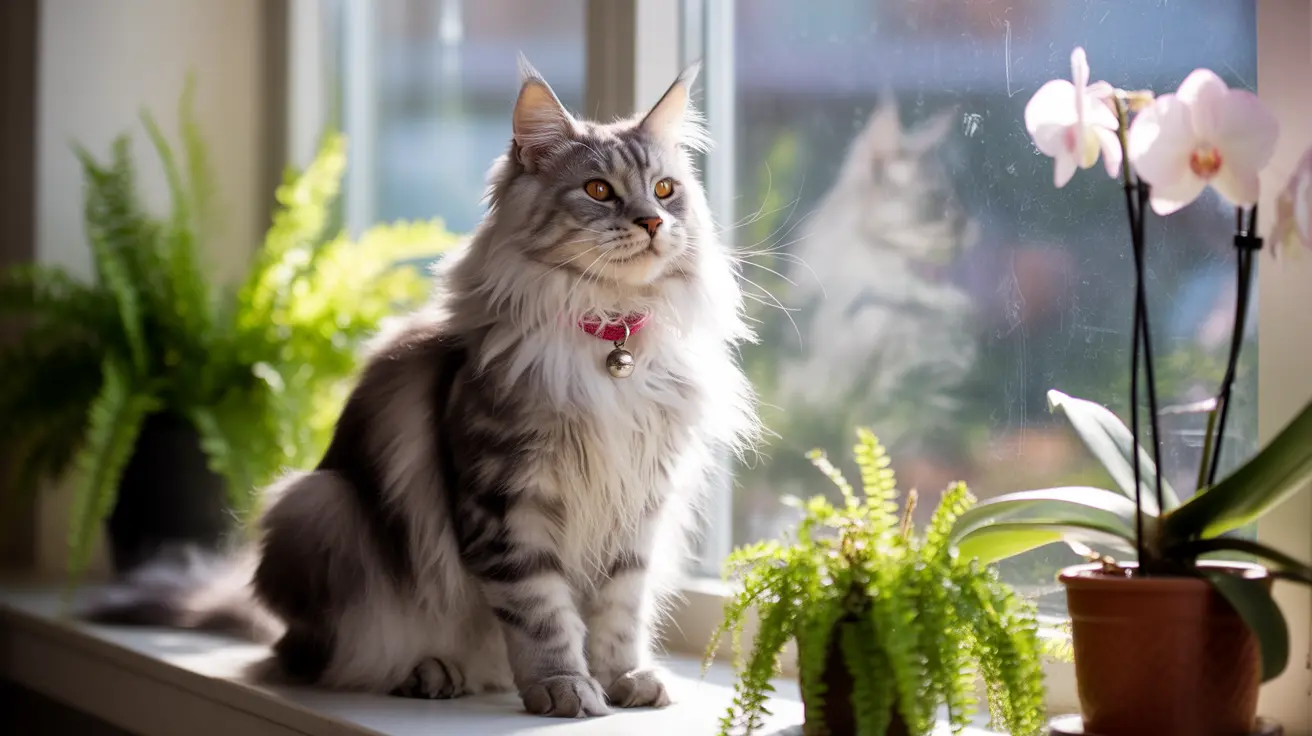The Essential Functions of Cat Fur
Protection and Insulation
One of the primary reasons cats have fur is for protection against environmental elements. Their coat serves as a natural insulator, helping maintain body temperature in both cold and hot weather. The complex structure of fur, with its multiple layers, creates air pockets that provide excellent temperature regulation.
Guard hairs, the outermost layer, are water-resistant and help keep cats dry, while the dense undercoat provides crucial warmth during cold weather. This dual-layer system allows cats to thrive in various climates and conditions.
Sensory Communication
Cat fur isn't just for protection - it's also a sophisticated sensory tool. Each hair follicle is connected to nerve endings, helping cats gather information about their environment. This is particularly evident in specialized hairs like whiskers (vibrissae), which help cats navigate tight spaces and judge distances.
The Structure of Cat Fur
Multiple Layers, Multiple Functions
Cat fur consists of three main types of hair:
- Guard hairs: The longest, protective outer layer
- Awn hairs: The middle layer that provides additional insulation
- Down hairs: The soft, insulating undercoat
Each layer serves specific purposes, working together to create an effective protective system. Even "hairless" cat breeds have a fine, barely visible layer of fur that serves these essential functions.
Seasonal Changes and Maintenance
Cats naturally shed their fur throughout the year, with more intensive shedding periods typically occurring in spring and fall. This process helps them adapt to seasonal temperature changes and maintains coat health. Regular grooming helps manage shedding and maintains the coat's protective properties.
The Evolution of Cat Fur
Through evolution, cats have developed their fur coats as a crucial survival adaptation. Different breeds have evolved varying fur lengths, textures, and patterns based on their ancestral environments and human breeding practices. This diversity in coat types demonstrates the adaptability of feline fur to different environmental needs.
Frequently Asked Questions
Why do cats have fur instead of just hair?
Cats actually have both fur and hair, which are made of the same protein (keratin). The term "fur" typically refers to the dense, protective coat covering their body, while "hair" often describes individual strands. This combination provides optimal protection and sensory capabilities.
What are the different types of fur and hair on a cat's coat?
Cats have guard hairs (outer protection), awn hairs (middle layer), and down hairs (insulating undercoat). Some cats also have specialized sensory hairs like whiskers. Each type serves specific functions in protection and sensation.
How does cat fur help with insulation and temperature regulation?
Cat fur creates insulating air pockets between its layers, helping maintain body temperature in both hot and cold conditions. The coat can be fluffed up to trap more air for warmth or laid flat to release heat.
Why do some cat breeds have longer fur while others appear hairless?
Fur length and texture variations result from selective breeding and genetic factors. Long-haired breeds were often developed in colder climates, while hairless breeds are the result of specific genetic mutations that have been deliberately bred.
How can I care for my cat's fur to keep it healthy and soft?
Regular brushing, a balanced diet rich in essential nutrients, and protection from parasites are key to maintaining healthy fur. Different coat types may require specific grooming tools and techniques for optimal care.
Conclusion
Cat fur is a remarkable feature that showcases nature's ingenuity in animal adaptation. Understanding why cats have fur helps us better appreciate these amazing creatures and provide better care for our feline companions. From protection against the elements to sophisticated sensory functions, cat fur continues to fascinate both scientists and pet owners alike.






